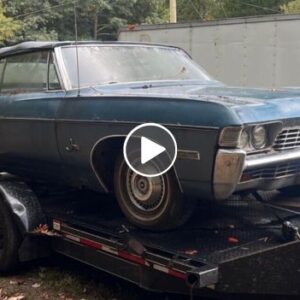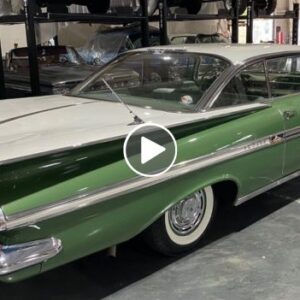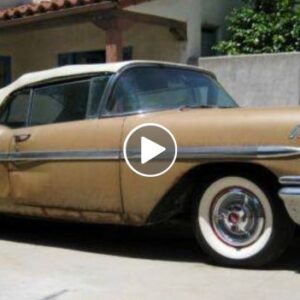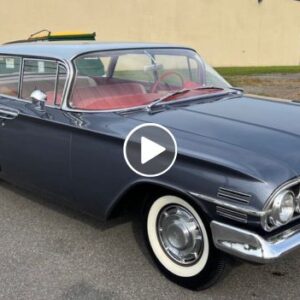The 1971 Dodge Charger stands as one of the most iconic American muscle cars of all time. With its aggressive design, powerful engine options, and rich racing heritage, the Charger has captured the hearts of car enthusiasts and collectors around the world. In this comprehensive guide, we’ll explore the history, features, and lasting legacy of the 1971 Dodge Charger, shedding light on what makes this classic car so special.
History of the 1971 Dodge Charger
The Dodge Charger first entered the automotive scene in 1966 as a fastback-styled muscle car based on the B-body platform. It quickly gained recognition for its distinct design and powerful performance. By 1971, the Charger was in its third generation, featuring a complete redesign that would set it apart from its predecessors.
The 1971 Charger boasted a more rounded, “fuselage” body style, with a split grille and hidden headlights. The new design aimed to appeal to a wider audience by offering improved aerodynamics, a more spacious interior, and enhanced safety features. Despite these changes, the Charger retained its bold, muscular appearance, ensuring its place as a true American muscle car.
Engine Options and Performance
One of the key aspects that set the 1971 Dodge Charger apart was its range of powerful engine options. The base model came with a 225-cubic-inch (3.7-liter) slant-six engine, producing 145 horsepower. However, the Charger was best known for its V8 options, which included:
-
- 318 cubic inches (5.2 liters) with 230 horsepower
-
- 383 cubic inches (6.3 liters) with 275 or 300 horsepower (two-barrel and four-barrel carburetor options, respectively)
-
- 440 cubic inches (7.2 liters) with 370 horsepower (dubbed the “Magnum”)
-
- 426 cubic inches (7.0 liters) with 425 horsepower (the legendary Hemi engine)
The range of engine options allowed buyers to tailor their Charger to their performance preferences, with the 426 Hemi being the ultimate choice for power enthusiasts. The Hemi-equipped Chargers are now highly sought-after collector’s items due to their rarity and impressive performance capabilities.
Transmission options for the 1971 Charger included a three-speed manual, a four-speed manual with a Hurst pistol-grip shifter, or a three-speed TorqueFlite automatic.
Trim Levels and Special Editions
Dodge offered various trim levels and special editions for the 1971 Charger, catering to a wide range of tastes and budgets. The base model was simply known as the Charger, with additional trims such as the Charger 500, Charger R/T, and Charger Super Bee.
The Charger R/T (Road/Track) was the performance-oriented model, featuring a standard 440 Magnum engine and various performance upgrades. The Super Bee, previously a separate model, became a Charger trim in 1971 and offered a more budget-friendly performance package.
One of the most famous special editions was the Charger Daytona, a limited-production, high-performance model featuring a massive rear wing and a unique nose cone for improved aerodynamics. Although the Daytona was primarily produced in 1969, a small number of 1971 Chargers were modified into Daytonas by creative enthusiasts.
Interior and Features
The 1971 Dodge Charger’s interior was designed with comfort and style in mind. The spacious cabin featured high-back bucket seats, a full-length center console, and an optional Rallye instrument cluster with a tachometer, clock, and gauges for oil pressure, coolant temperature, and amperage. Other options included air conditioning, power windows, and an AM/FM radio with an 8-track tape player.
Dodge also offered a range of exterior features and styling options, such as vinyl roofs, hood pins, various striping packages, and the iconic “Ramcharger” fresh air induction system, which used a hood scoop to channel cool air directly into the engine.
Racing Heritage and Pop Culture
The Dodge Charger gained significant fame on the racetrack, particularly in NASCAR. The 1971 Charger saw success with legendary drivers like Richard Petty, who won multiple races driving a Petty Blue Charger. The car’s racing accomplishments further solidified its status as a true American muscle car.
In addition to its racing heritage, the Charger has made numerous appearances in movies and television shows. Perhaps the most famous is the 1969 Charger featured in the classic TV series “The Dukes of Hazzard,” known as the “General Lee.” While not a 1971 model, the show’s popularity helped cement the Charger’s status as a pop culture icon.
The 1971 Dodge Charger Today
Over the years, the 1971 Dodge Charger has become a highly sought-after classic caramong collectors and enthusiasts alike. Its unique design, powerful engine options, and rich history make it a standout in the world of American muscle cars. While original examples in pristine condition can fetch high prices, many enthusiasts choose to restore or modify Chargers to their personal tastes, ensuring that these classic cars continue to be enjoyed on the road and at car shows.
The Charger’s legacy lives on in the modern Dodge Charger, which was reintroduced in 2006 as a four-door sedan with performance-focused models. While the new Charger is a far cry from its 1971 ancestor in terms of design and layout, it still embodies the spirit of American muscle with its powerful engine options and aggressive styling.
A few resources to help you find and purchase a 1971 Dodge Charger:
Hemmings Motor News (https://www.hemmings.com/): Hemmings is a well-known marketplace for classic cars, offering listings from private sellers and dealerships. You can search for 1971 Dodge Chargers and filter the results based on your preferences, such as location, price, and condition.
ClassicCars.com (https://classiccars.com/): Another popular platform for buying and selling classic cars, ClassicCars.com allows you to search for 1971 Dodge Chargers listed by private sellers and dealers. You can also set up email alerts for new listings matching your criteria.
eBay Motors (https://www.ebay.com/motors): eBay Motors is a good place to search for classic cars, including the 1971 Dodge Charger. You can find listings from both private sellers and dealers and filter results based on factors like location, price, and mileage.
AutoTrader Classics (https://classics.autotrader.com/): AutoTrader Classics is a dedicated platform for buying and selling classic and collector cars. You can search for 1971 Dodge Chargers and refine your search based on numerous criteria.
Classic Car Clubs and Forums: Joining a classic car club or online forum dedicated to the Dodge Charger or Mopar cars can be a great way to network with other enthusiasts, who may have leads on available Chargers for sale or know of upcoming events where you can find potential sellers. Examples include the Dodge Charger Registry (http://www.dodgechargerregistry.com/) and the Dodge Charger forum on For B Bodies Only (https://www.forbbodiesonly.com/moparforum/forums/dodge-charger-discussion.12/).
Local Car Shows and Swap Meets: Attending local car shows and swap meets can be an excellent way to find a 1971 Dodge Charger for sale, as well as to meet other enthusiasts who can provide valuable advice and information. Keep an eye out for events in your area and make connections with fellow classic car lovers.
The 1971 Dodge Charger remains a cherished icon of American muscle car history. With its distinctive design, impressive performance capabilities, and storied racing heritage, it’s no wonder that the car continues to captivate the hearts of enthusiasts worldwide. Whether in pristine original condition or as a lovingly restored project, the 1971 Charger stands as a testament to the golden age of American automotive performance and style.





